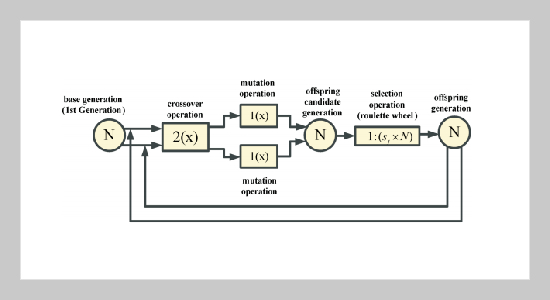Yang-Han Lee This email address is being protected from spambots. You need JavaScript enabled to view it.1, Yih-Guang Jan1 , Yun-Hsih Chou2 , Hsien-Wei Tseng1 , Ming-Hsueh Chuang1 , Shiann-Tsong Sheu3 , Yue-Ru Chuang1 , Jei-Jung Shen1 and Chun-Chieh Fan4 1Department of Electrical Engineering, Tamkang University, Tamsui, Taiwan 251,R.O.C.
2Department of Electronic Engineering, St. John’s University, Tamsui, Taiwan 251, R.O.C.
3Department of Communication Engineering, National Central University, Taoyuan, Taiwan 320, R.O.C.
4Department of Computer & Communication Engineering, St. John’s University, Tamsui, Taiwan 251, R.O.C.
Received:
May 5, 2005
Accepted:
June 18, 2007
Publication Date:
June 1, 2008
Download Citation:
||https://doi.org/10.6180/jase.2008.11.2.08
In the basic genetic algorithm and its variations, they usually process the calculations in a sequential way so that the waiting time for every generation member awaited to be processed increases dramatically when the generation evolution continues. Consequently the algorithm converging rate becomes a serious problem when we try to apply the genetic algorithm in real time system operations such as in the packet scheduling and channels assignment in the fiber optic networks. We first propose in this paper a genetic algorithm accelerator which has the capability not only to accelerate the algorithm convergent rate but also to have its solution to reach the problem’s optimum solution. Then we develop hardware blocks such as the blocks of Base Generator, Operation Selector, Delta Calculator, Duplicate Priority Encoder, Abort Priority Encoder and Next Generator, etc. to realize this proposed generic algorithm accelerator. Due to these hardware blocks realizations it will enhance the speed of the algorithm converging rate and make certain its convergent solution reaches the problem’s optimum solution.ABSTRACT
Keywords:
Genetic Algorithm, Packet Scheduling, Base Generator, Operation Selector, Delta Calculator, Duplicate Priority Encoder, Abort Priority Encoder, Next Generator
REFERENCES
















